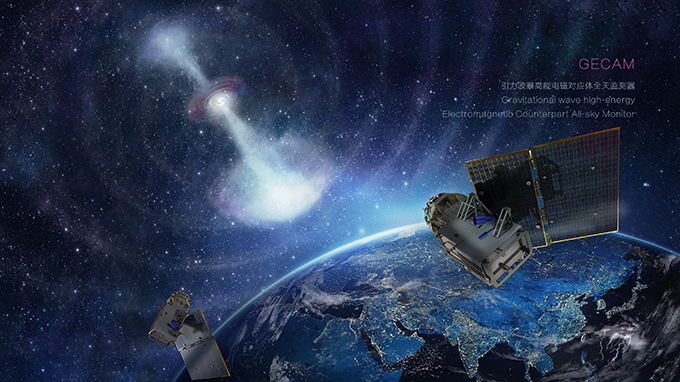On December 10th, 2020, the Gravitational Wave High-energy Electromagnetic Counterpart All-sky Monitor (GECAM) mission was launched by a Long March 11 carrier rocket from the Xichang Satellite Launch Center in Southwest China's Sichuan province. GECAM mission Developed by the Innovation Academy for Microsatellites of Chinese Academy of Sciences. It consists of two microsatellites which will detect high-energy radiation phenomena in space.

GECAM is the first scientific satellite mission launched after the establishment of the Space Science Laboratory of the National Science Center, Huairou, Beijing. It was named “Huairou 1st” by Chinese Academy of Sciences and Beijing government. The two satellites in the system, nick-named “Xiao Ji” and “Xiao Mu” in Chinese, are located on two sides of the Earth. In fact, their nick-names mean “poles” and “eyes” in the language, which vividly symbolize with their function. The mission specially aims at the research opportunity of gravitational wave gamma ray bursts (i.e., high-energy electromagnetic counterpart of gravitational waves). Through the layout of two satellites on both sides of the Earth, it monitors the high-energy radiation phenomena such as gravitational wave gamma bursts in orbit, and solves the mystery of intense merging of dense celestial bodies in the universe.
The engineering team of the GECAM mission has an average age of 33. The team conquered all kinds of difficulties along with the impact of the COVID-19 pandemic and successfully completed the mission within 2 years.
So far, the Innovation Academy for Microsatellites of Chinese Academy of Sciences has reached a record of 32 launch events. The total amount of satellites launched is 61.


